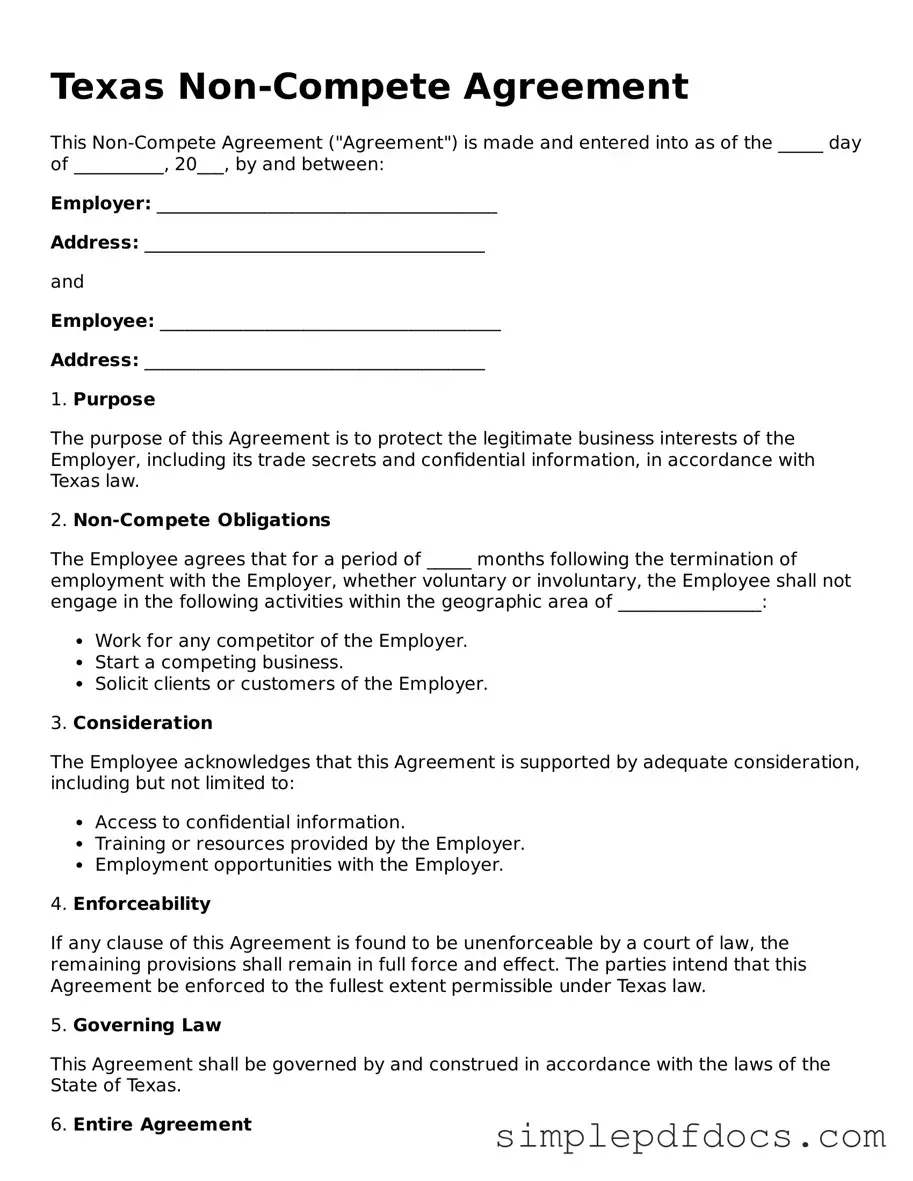In the competitive landscape of Texas business, protecting trade secrets and maintaining a loyal workforce is crucial for many employers. One way to achieve this is through a Non-compete Agreement, a legal tool that outlines the terms under which an employee agrees not to engage in similar work for a specified period and within a defined geographical area after leaving a job. These agreements serve to safeguard a company’s interests, ensuring that sensitive information and client relationships are not easily transferred to competitors. However, the enforceability of such agreements can vary significantly based on specific conditions, including the reasonableness of the restrictions imposed. In Texas, the law requires that non-compete clauses be part of an enforceable contract, often necessitating additional consideration, such as a job offer or specialized training. Understanding the nuances of the Texas Non-compete Agreement form is essential for both employers looking to protect their business and employees seeking to navigate their career paths effectively. This article will delve into the key components of the form, explore its implications, and provide insights into best practices for drafting and enforcing these agreements.
